
Nature is not always lovely and beautiful, there is plenty of gore and suffering. And we have added to it. In the US it's estimated that over one million vertebrate animals are killed by vehicles every day!
Some countries research the impact of roads on wildlife, including through citizen science where the general public collects the data. This can help find ways to alleviate the problem.
At a personal level paying attention to roadkill it is actually quite a good way of seeing what wildlife is living in an area. It's never a pleasant experience to look closely at squashed animals but I prefer it to turning a blind-eye, and I often see species that are otherwise hard to find.
What follows is a report on a little roadkill wildlife survey I did on my bicycle around the country roads close to our home in the agricultural lowlands of Thailand. A bike is easily the best way of doing it as I can go slowly enough to see even small animals but quickly enough to cover a good distance plus I can stop anywhere. I cycled about 20km which took me about two and a half hours.
These are in the order I found them.
1- The Common Rose (Pachliopta aristolochiae) - a large and quite beautiful butterfly that visits our garden regularly; not usually thought of as roadkill, butterflies can be hit quite hard
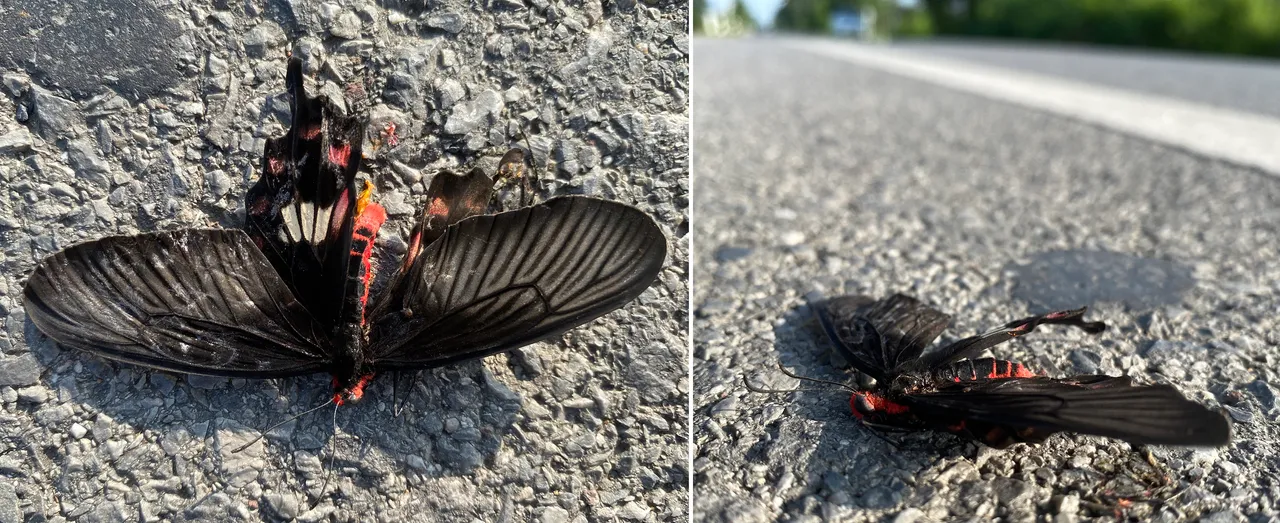
2- Coconut Rhinoceros Beetle (Oryctes rhinoceros) - a destructive pest of palm trees so no great loss

3- Indochinese Roller (Coracias affinis) - its stunning blue wings unfortunately didn't save this one


4- White-lipped Pit Viper (Trimeresurus albolabris) - a test of my identification skills without a head but size, shape, colour and a hint of a white stripe down its body nailed it
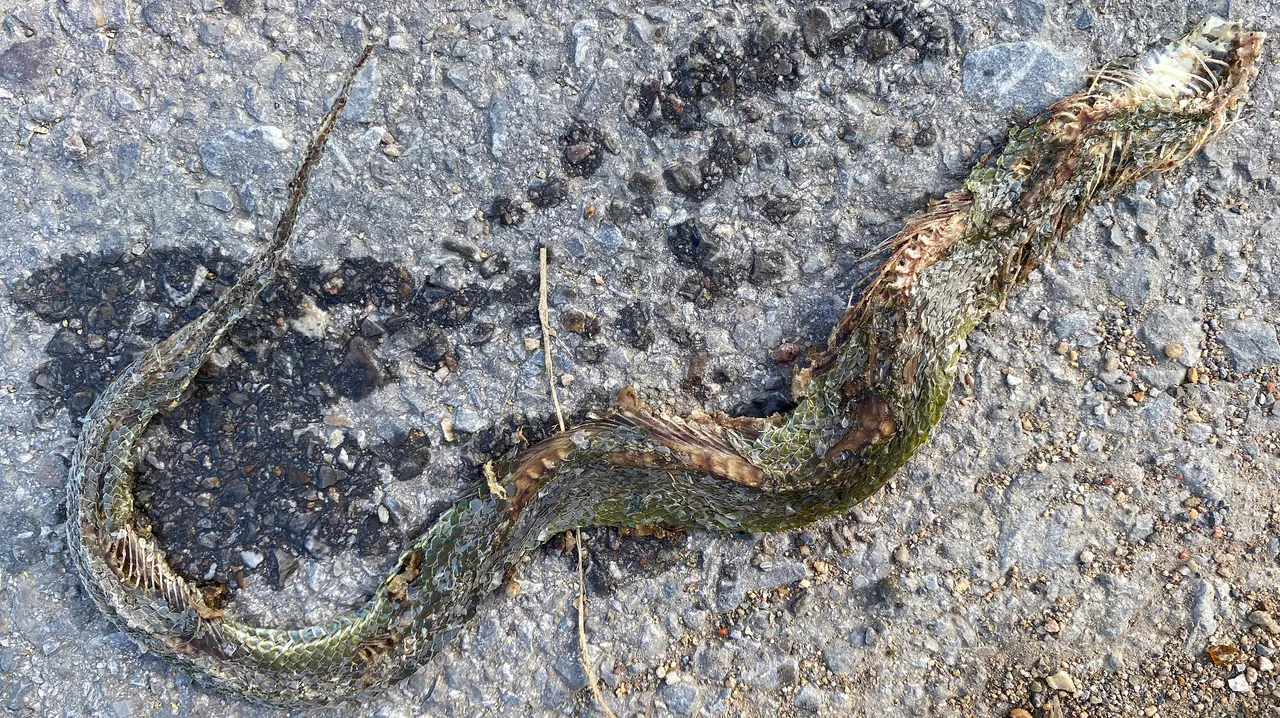
5- Sunbeam Snake (Xenopeltis unicolor) x2 - a water snake with lovely irridescence along its body when alive

6- Unknown Fish - I guess this isn't actually roadkill, more likely fell out of somebody's basket or was possibly dropped by an animal
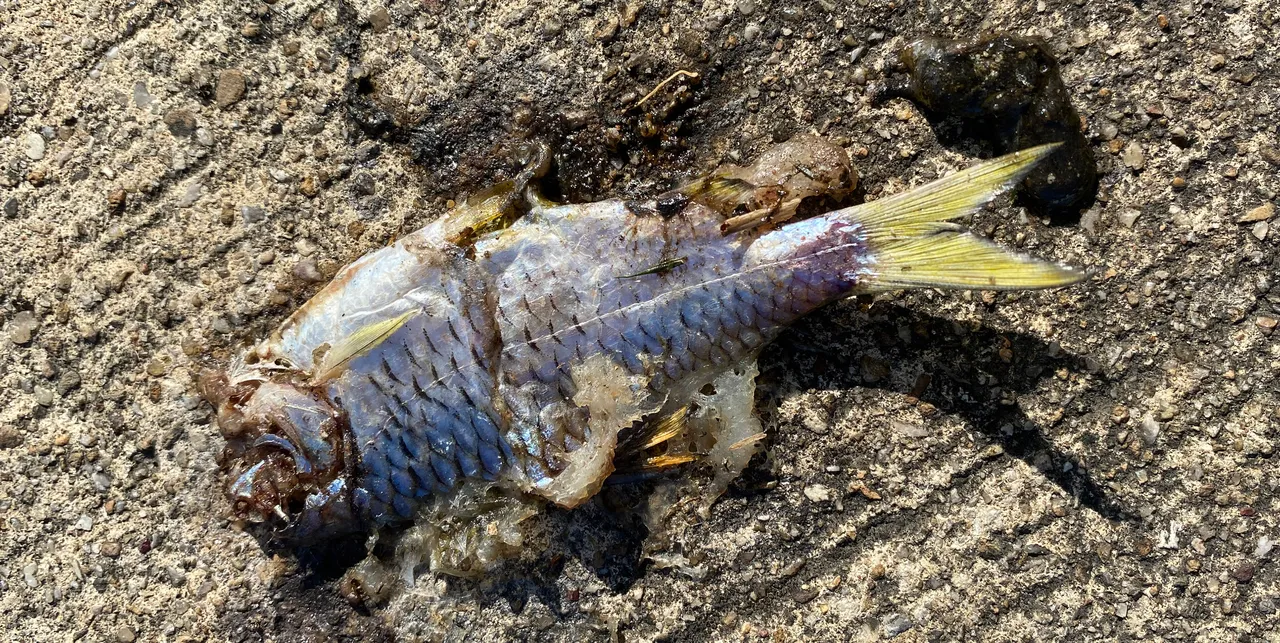
7- Indochinese Rat Snake (Ptyas korros) - in this state could be confused with a cobra but its long, thin tail and scales like a fishnet stocking are distinctive

8- Little Egret (Egretta garzetta) - usually a much more beautiful sight than this dirty grey mess
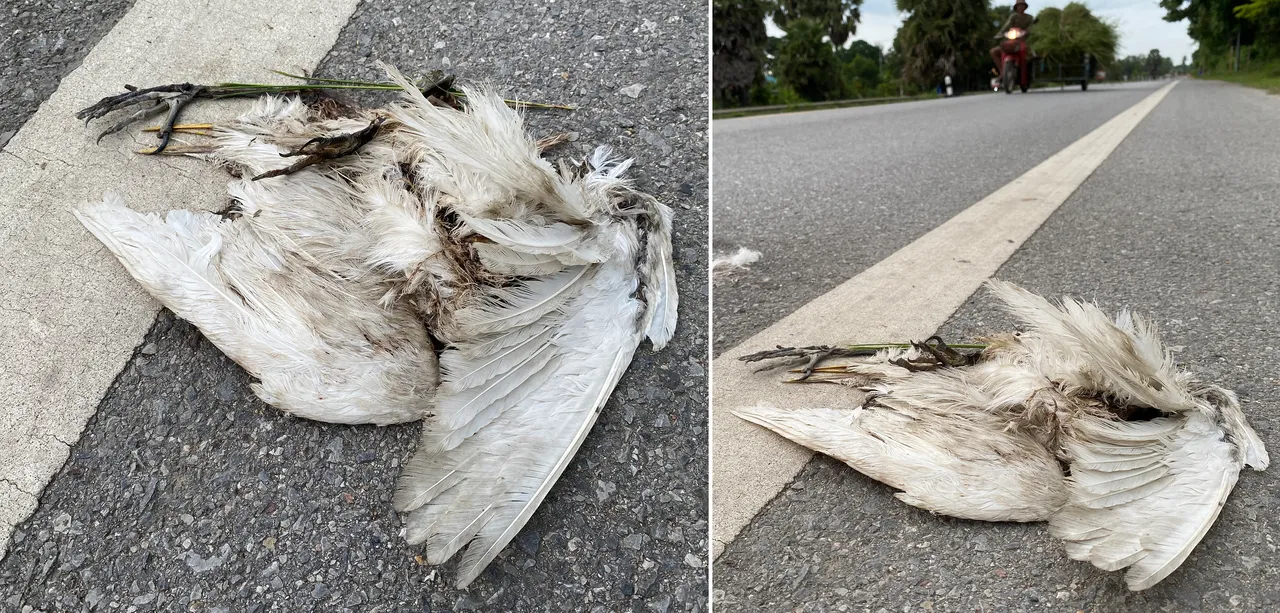
9- Greater Coucal (Centropus sinesis) - a heavy-bodied, poor flyer so often hit by vehicles

10- White-lipped Pit Viper - number 2
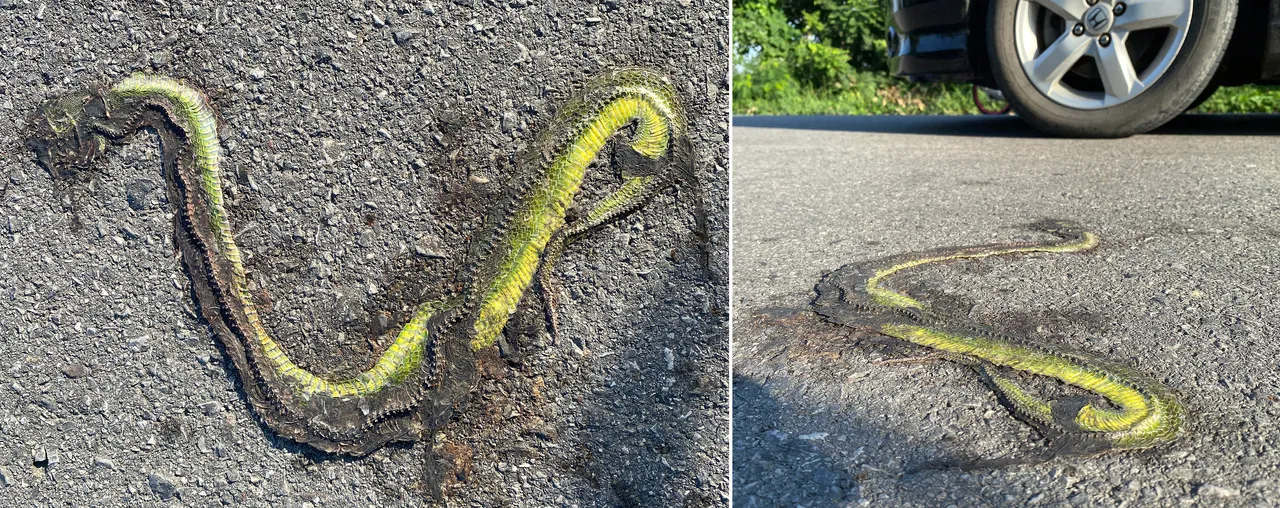
11- Jodi's Pipe Snake (Cylindrophis jodiae) - called the two-headed snake in Thai due to its habit of curling its tail into the air as a decoy
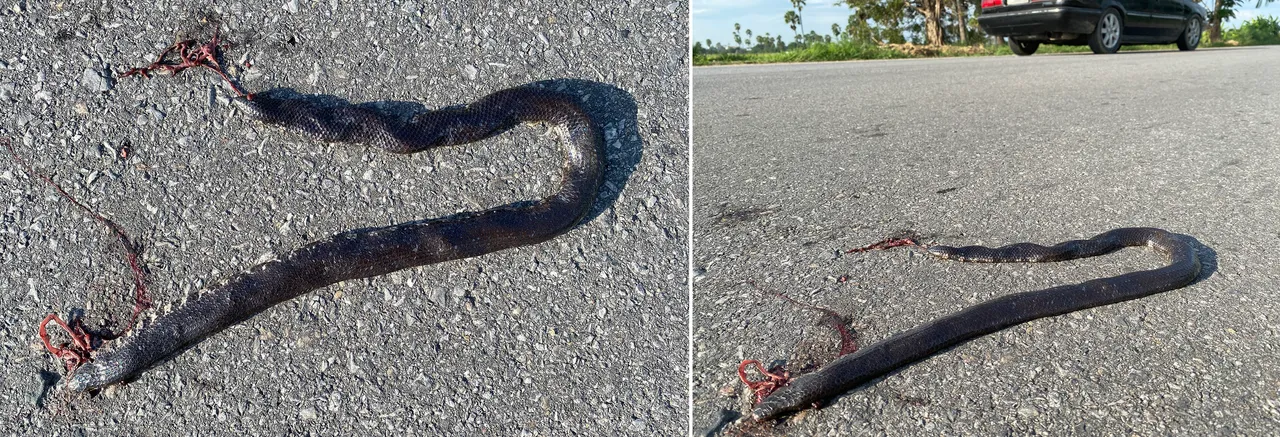
12- Rainbow Water Snake (Enhydris enhydris) - a snake that can never live up to its name!

13- Indochinese Rat Snake - number 2
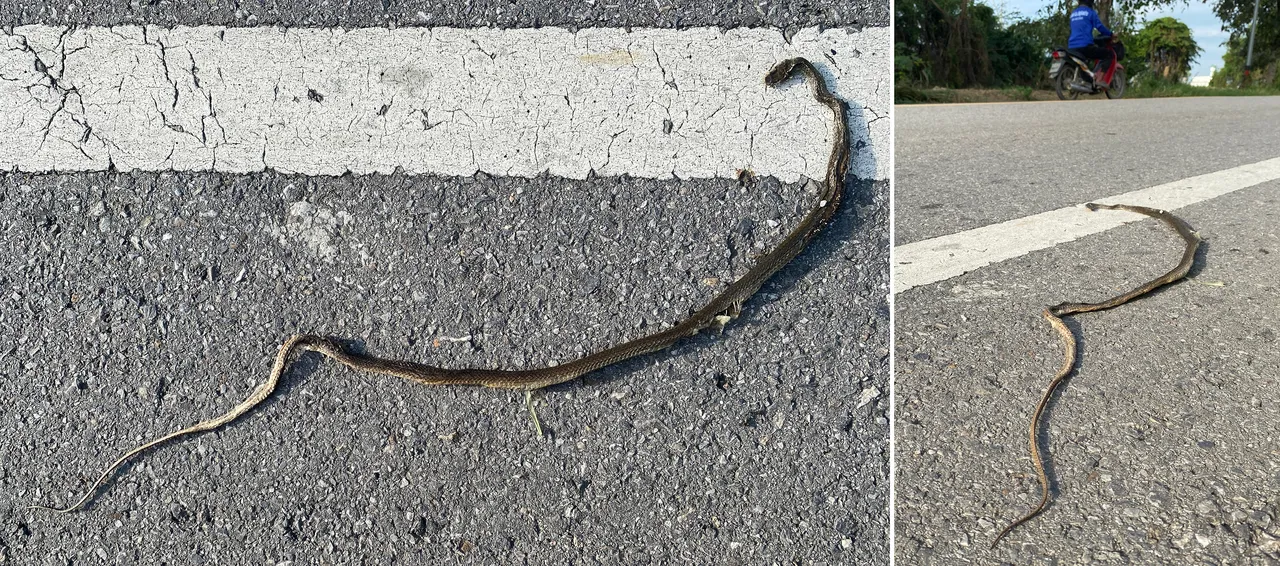
14- Rainbow Water Snake - number 2

15- Snail-eating Turtle (Malayemys sp.)? - hard to be sure about identification without its head or top shell!
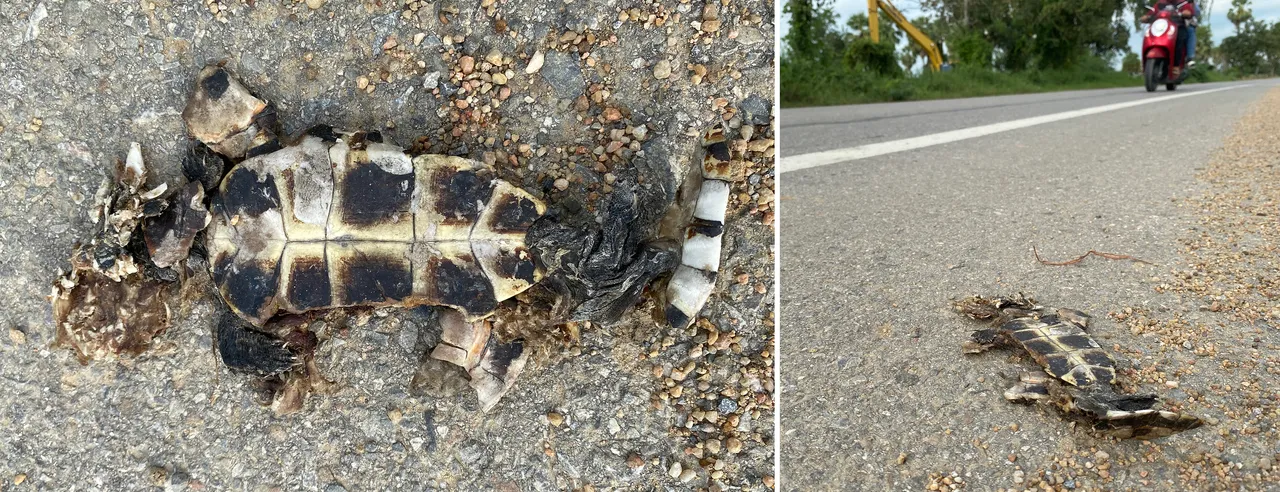
16- The Common Rose - number 2
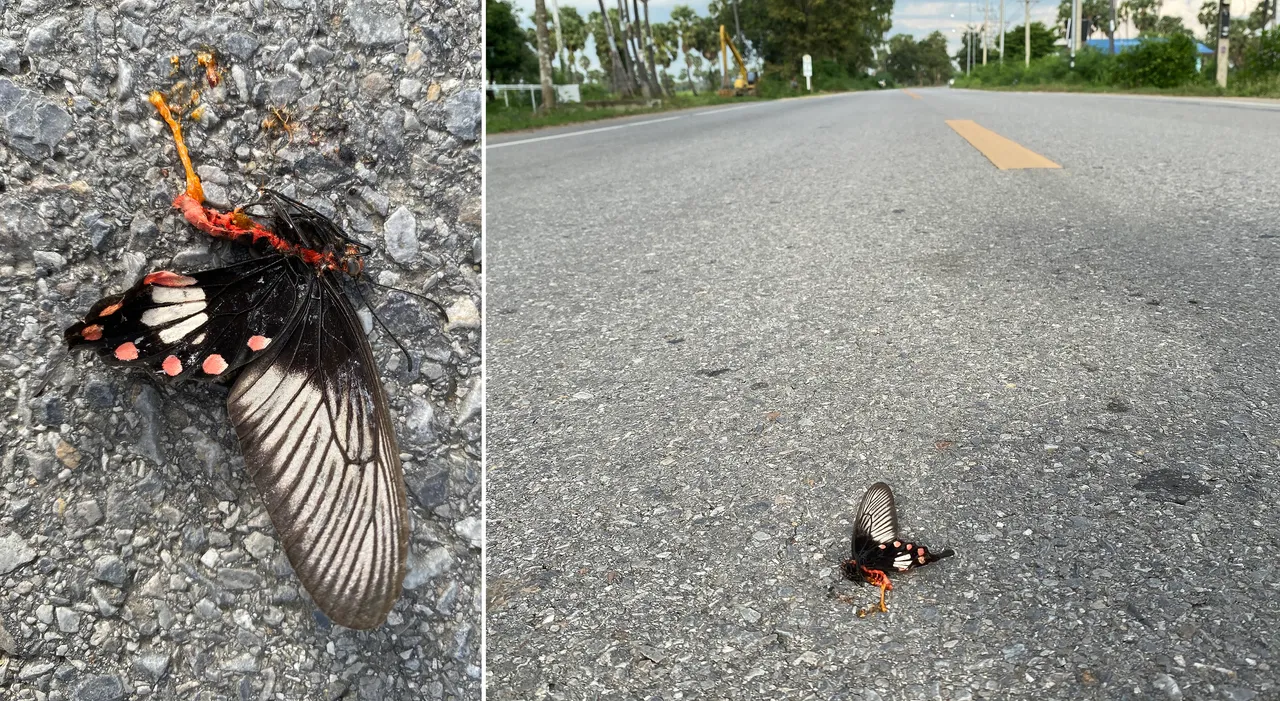
17- Yellow-spotted Keelback (Fowlea flavipuntata) - always found near water and I regularly see it by our garden pond
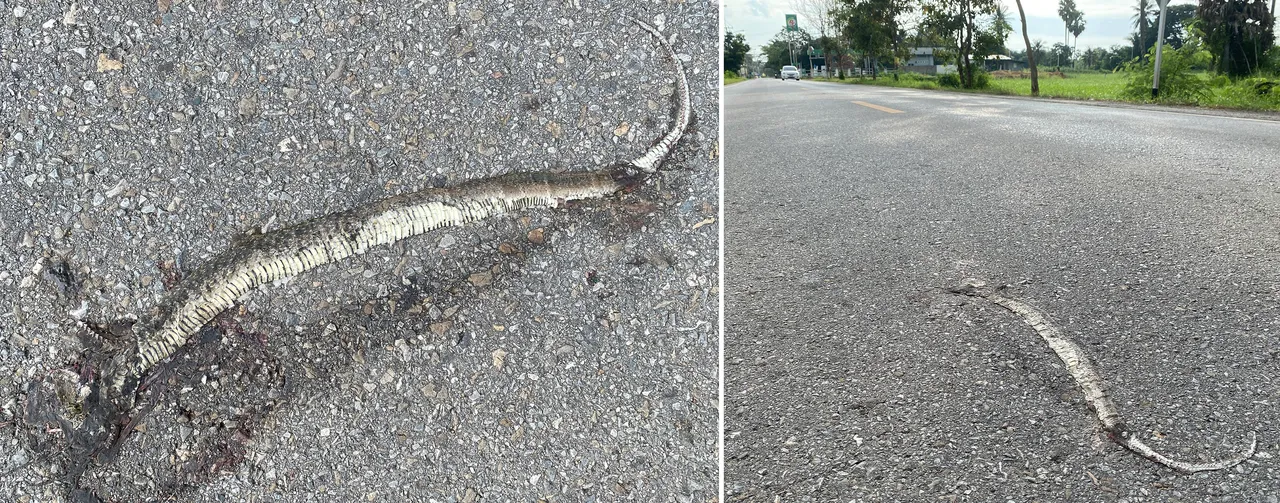
18- Rock Pigeon (Columba livia) - usually so confident at avoiding vehicles this one was perhaps sick or just misjudged it

19- Yellow-spotted Keelback - number 2

20- Several Coconut Rhinoceros Beetles and unidentified moths - all found under this tungsten road light
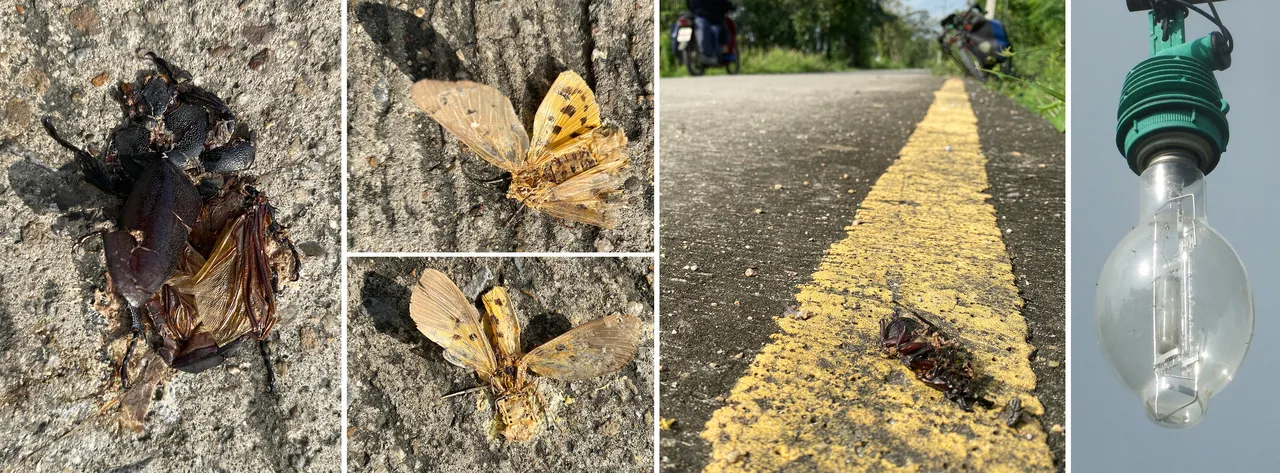
So in total I found 4 birds, 11 snakes (of 6 different species), 1 turtle, 3 invertebrates big enough to catch my attention, and a fish. Of course not all wildlife is at equal risk from speeding cars so this isn't representative of the whole local fauna but it's an interesting selection.
Snakes are by far the commonest roadkill around us. They are very mobile but struggle with the smooth surface of roads and their long bodies make it more likely that they actually get hit. I suspect there might also be an element of people swerving to hit them!
We have many canals in our area which are a haven for a lot of wildlife. Unfortunately, these waterways often run alongside roads making that wildlife very vulnerable if it leaves the water.
Drive safely with care!
